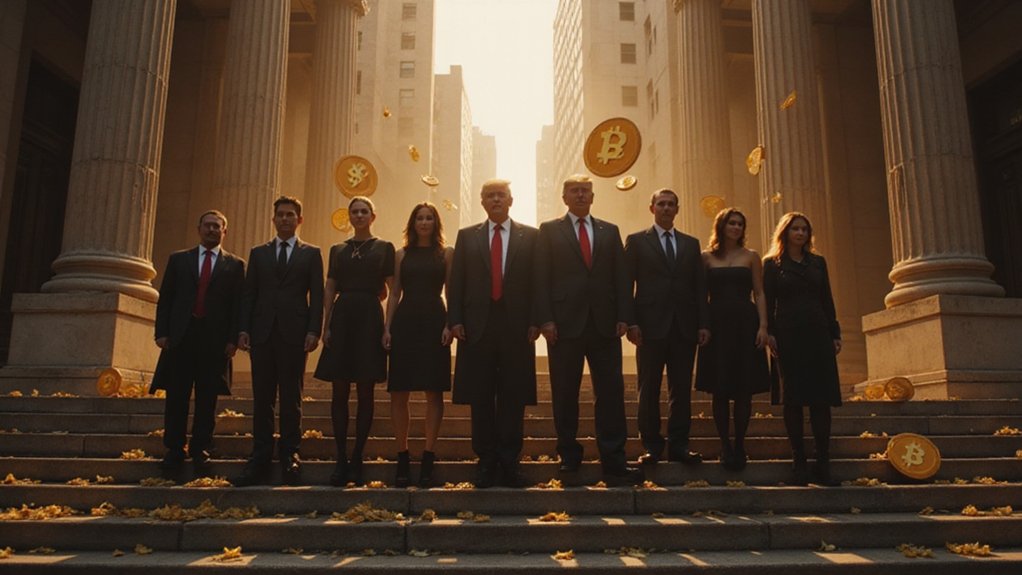While risk-weighted assets have long served as banking’s regulatory bedrock—dutifully measuring credit, market, and operational risks to determine how much capital banks must hold against potential losses—the financial world has recently discovered an entirely different interpretation of the RWA acronym that promises to upend traditional asset ownership models.
The conventional RWA framework, refined through Basel III‘s meticulous calculations, transforms a bank’s portfolio into risk-adjusted numbers that supervisors can actually work with. Government bonds receive preferential treatment with lower risk weights, while corporate loans carry heavier burdens—a sensible arrangement that incentivizes prudent lending while discouraging the sort of reckless speculation that tends to end poorly for depositors.
This system culminates in the capital adequacy ratio, where eligible capital divided by risk-weighted assets reveals whether a bank can weather financial storms or becomes another cautionary tale.
Beyond mere compliance, banks increasingly rely on Return on Risk-Weighted Assets (RORWA) to measure performance with greater sophistication than traditional metrics allow. Unlike basic return on assets calculations, RORWA contextualizes profitability against actual risk exposure, offering executives and regulators a clearer picture of capital efficiency. Banks utilize portfolio diversification across sectors and geographies as a fundamental strategy to mitigate risk concentrations that could otherwise undermine their RORWA performance.
RORWA transforms banking performance measurement by contextualizing profitability against actual risk exposure rather than crude asset totals.
Financial institutions now benchmark themselves using this risk-adjusted lens, while supervisors scan RORWA trends for early warning signs of systemic trouble.
Enter the blockchain revolution, where RWA suddenly represents “Real World Assets” undergoing tokenization—a transformation that converts tangible assets like real estate and commodities into digital tokens tradeable on distributed ledgers.
This technological shift promises enhanced liquidity through fractional ownership, transparent automated transactions, and reduced intermediary costs. Smart contracts enable automated compliance through predetermined regulatory parameters, significantly reducing both operational costs and human error in financial transactions. Stablecoins facilitate settlement within these ecosystems, while Wallet-as-a-Service platforms lower entry barriers for institutions lacking blockchain expertise. Companies like Paxos provide regulated blockchain infrastructure that enables enterprises to create branded stablecoins through their Stablecoin-as-a-Service platform, facilitating real-time payments and cross-border transactions with minimal fees.
The market has responded enthusiastically, with MANTRA commanding approximately $6.92 billion in valuation by early 2025, substantially outpacing competitors like Ondo and Maker in the tokenization space.
Whether this represents genuine innovation or merely another iteration of financial engineering remains an open question—though the convergence of traditional risk management and blockchain technology suggests that both interpretations of RWA may ultimately reshape how markets function.









